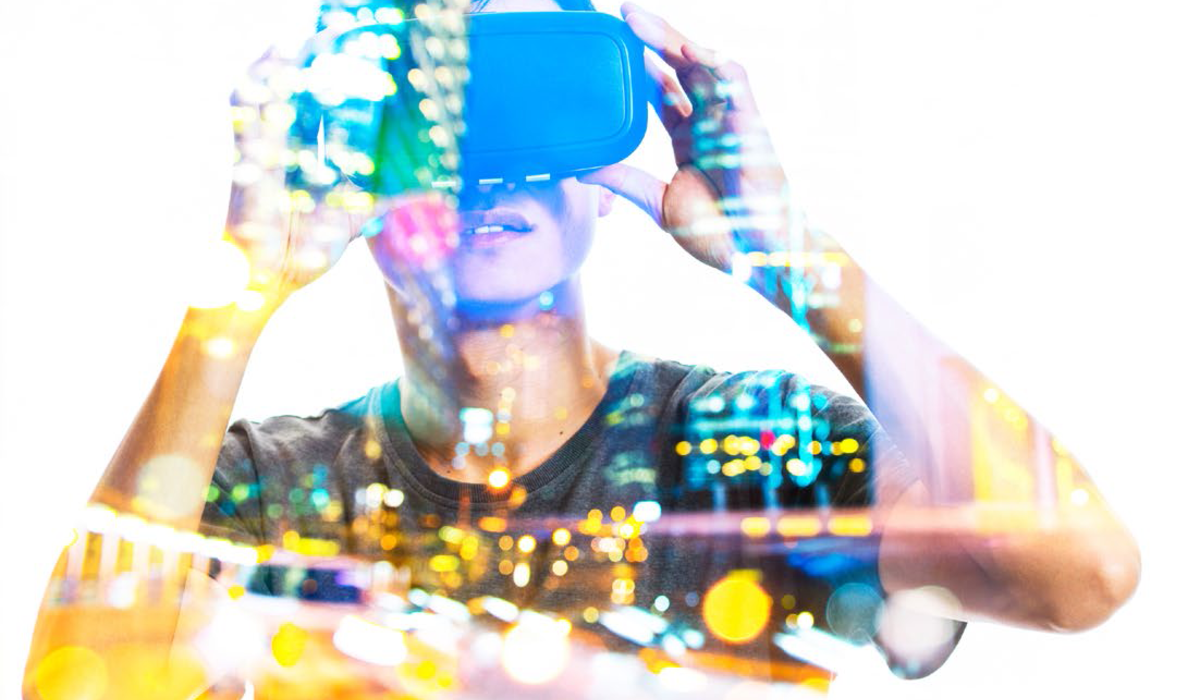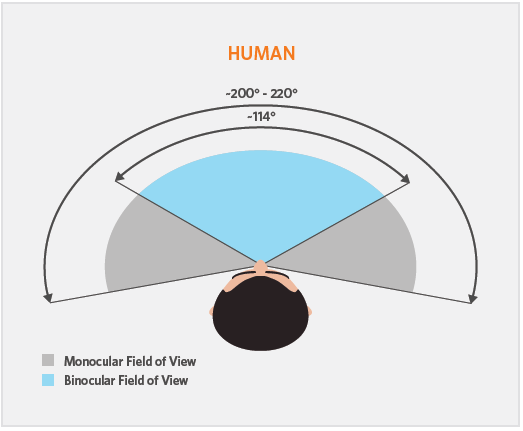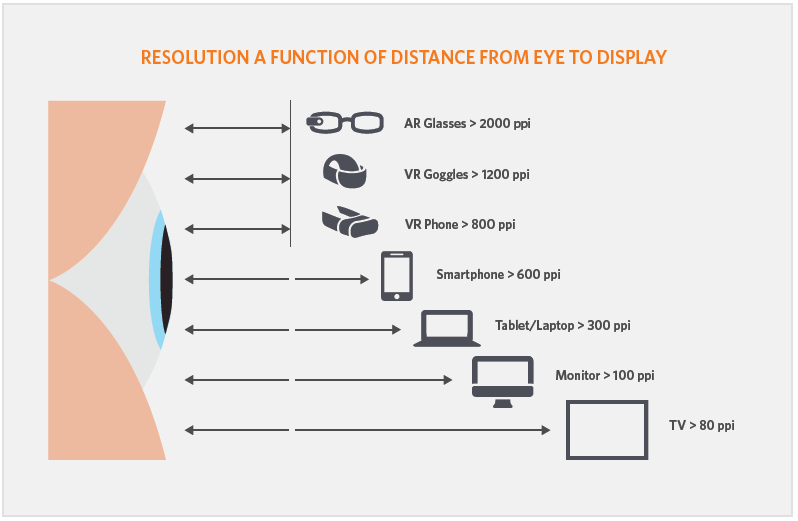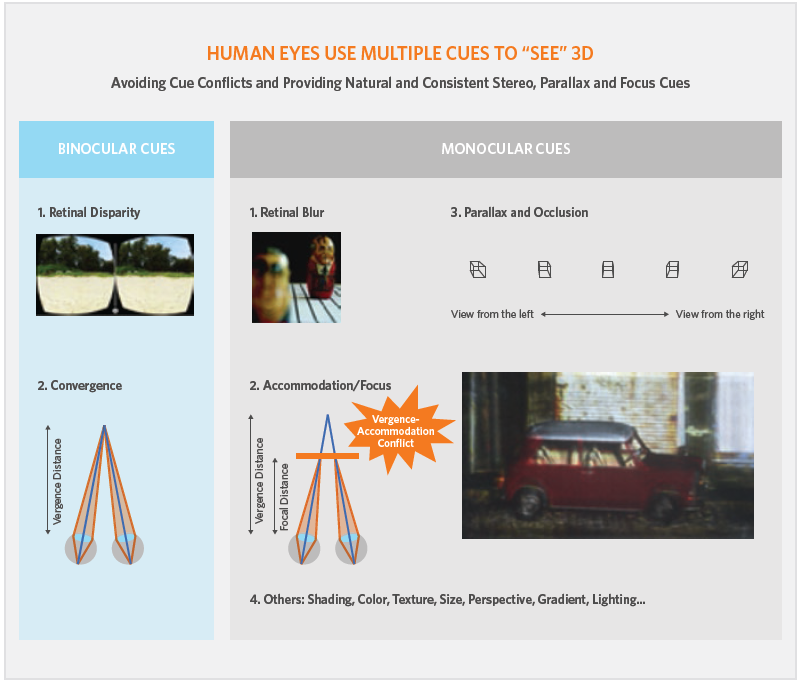
Display Technology Pushes Virtual Reality Forward
When you put on a virtual reality (VR) headset, you are connecting visually to another place—real or imagined. Most people connect VR with gaming, but increasingly business, industry and government users are finding new applications for the evolving technology. These applications, and many more to come, will help drive the adoption of VR and the devices used to access virtual environments.
Today, the ubiquitous smartphone is typically the engine of a VR headset, encouraging mass adoption. As VR technologies advance, however, several display requirements must be met to achieve a desirable state of presence and improve the user experience: low image “persistence” and high screen-refresh rate; a high frame rate to avoid latency effects; high screen resolution; and a large field of view (FOV). All of these take advantage of the tricks the mind uses to perceive depth of field and focus, and to create 3D vision.
Persistence
Image persistence and screen refresh rate are closely linked—and in both cases, faster is better when it comes to replicating reality. Persistence is the time it takes for a new image to replace the current one. The lower the persistence, the sharper the image appears. If persistence is high or “full,” the image will seem blurry.
屏幕刷新率是显示屏上图像每秒可以刷新的次数。刷新速度越快,持久性较低。每个毫秒至关重要。
OLEDdisplays respond more than 1000 times faster than LCD displays, eliminating motion blur and jitter and meeting requirements for image quality, power efficiency and smaller form factors. They are therefore the industry standard for smartphone VR.
潜伏
真正现实的VR体验需要低延迟,这是从您移动头到正确渲染视图的时间。在现实世界中,您的头部实际运动和您感知的运动形象在眼睛和内耳之间同步。相比之下,在VR中,移动头部和VR耳机中图像的运动之间存在延迟。如果延迟太长,VR浸入会感觉不自然。为了获得平滑自然的VR体验,延迟必须小于20毫秒。
视场
FOV is the extent of the observable environment at a given moment. It is one of the more important aspects of VR: the wider the FOV, the more likely the user will feel present in the experience. FOV comprises both monocular and binocular vision that work in tandem to determine depth of focus and 3D vision.
Full human eye FOV is 170° horizontal x 130° vertical. But in VR, the limiting factor is the lenses in the headset. To get a better FOV, you must either move closer to the lenses or increase their size.

解析度
Screen resolution, as measured in pixels per inch (ppi), is another important aspect of VR systems. Because smartphone displays are placed fairly close to the eye in VR headsets and are magnified by lenses, individual pixels are sometimes seen. Higher-density OLED screens eliminate this problem.

gergence
基于智能手机的VR系统必须适应我们的眼睛的狂热,这是我们专注于某些事情的同时将学生转向或彼此之间的转变。一个物体越接近,我们的眼睛就越会融合到FOV的中心。当某事距离较远时,我们的眼睛会散开以使其居中。
Gergence为大脑提供了几何数据,以三角测量并计算从我们到对象的距离:两个角度(一个来自每只眼睛的角度)和我们的位置。大多数VR显示器显示与每只眼睛的单独图像,以利用这些深度提示。如果图像彼此正确同步,并随着头部的运动而同步,则会产生一种令人信服的深度幻觉。

OLED显示

亚博最新版本应用材料的技术用于制造OLED显示器。我们的工具建立了高性能的薄膜晶体管(TFTS),可提供高电子机动性,高度可靠的背板性能和OLED性能稳定性。将来,随着更高屏幕分辨率和较小像素的日益增长的要求,我们的材料工程解决方案将变得更加重要 - 正如所讨论的在我的同事托尼·乔(Tony Chao)的最新博客中, who also considers the role Light Field Technology and digital light processing could potentially play in creating convincing VR.
即使您不是VR用户,也会使VR成为现实的展示技术进步也会影响您:作为智能手机用户,您将受益于更好的图像质量,OLED显示器,以获得令人惊叹的颜色和小型形式。
The全文关于这个主题发表在Nanochip Fab Solutions.
想加入讨论吗?
添加新评论:*
*评论s must adhere to ourDiscussion Guidelines and Rules of Engagement.